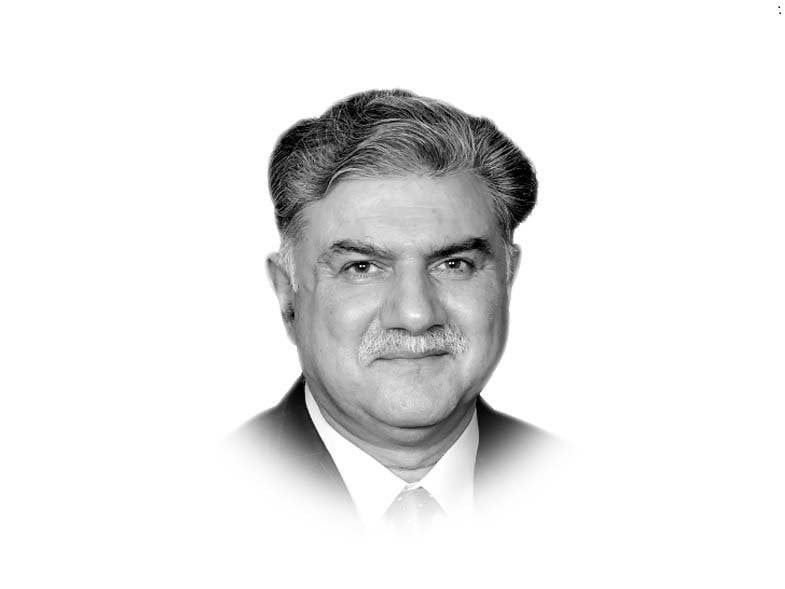
Last year, we were in a seminar with a European country/military discussing the regional security construct, and there was a lot of talk, immense optimism and huge expectations from the outcome of Ukraine's counter-offensive then in the offing. Even senior military delegates, fully knowing that the counter-offensive did not meet the TSR (Time, Space and Relative Strength) criterion that is critical for success, were starry-eyed. Europe seemed to have pinned all hope on this maneuver.
On 27 July 2023 I published 'Ukraine's counter-offensive - technical notes' followed by a piece 'The technicalities of Ukraine's counter-offensive' on 3 August. President Zelenskyy and his generals were aiming to evict 'all' Russian forces from Donbas/Donetsk Regions and Crimean Peninsula. I argued that Russian Forces (RAF) were then well dug in with strong points, pillboxes, urban fortifications and layered defensive lines based on (water) obstacles, with large security zone in front that was extensively mined, booby-trapped and IED-laced, and covered with long-range fires, anti-tank nests and tank-hunting teams.
The classic theory of warfare warranted a 3:1 superiority for Ukrainian Forces (UAF) to succeed against ordinary defences. With fortifications etc, the ratio went as high as 30:1. You needed 30 Ukrainian troops to subdue one Russian soldier behind fortification, irrespective of technological superiority and other factors. Kiev never had these numbers, including the French Legionnaires, the Western volunteers and other European troops secretly employed - all combined.
And then, violating the military truism, it was a weaker side (Ukraine) on the offensive against a stronger side (Russia) on the defensive. One wondered how Generalship in the entire Western World had pinned such hopes from this military absurdity. So, under cold military logic and for all to see, the Ukrainian counter-offensive came to a grinding halt, dashing with it the Western hopes of resolution of war on favourable terms.
Around 6 August 2024, Russia's Defense Ministry reported a surprise ground assault into western Russia's Kursk region by Ukraine's 22nd Mechanized Brigade comprising (then) some 1,000 mechanised troops, some 30 tanks and armoured fighting vehicles (AFV) including the US-provided Stryker AFVs. This is the largest and the first UAF incursion into Russia proper, as previous assaults were carried out by armed Russian exiles, supported by UAF.
Following military taxonomy, this could be termed as a weak 'Riposte', (not a 'Diversionary Attack' as some call it) aimed at forcing a recoil on Russian Army (RA) which now is tactically on the offensive, after absorbing the Ukrainian counteroffensive. UAF purposed this 'Riposte' to force Russia to divert forces from the contested front in the south, relieving pressure on UAF. The Western press is in overdrive to paint this as a game changer in the badly stalemated war.
The Russian response included sending reinforcements, limited evacuations, conducting airstrikes and reportedly firing thermobaric missile on Ukrainian troops, whose blast wave suffocates those targeted. Interestingly, fearing the RA retaliation, Ukrainian authorities on 9 August ordered evacuating some 20,000 people from Sumy region, opposite Kursk. Russia's lack of preparedness, being surprised despite ubiquitous surveillance, intelligence failure and lax border control are attracting domestic criticism.
However, military analysts now report the incursion bogged down against a Russian response, after some easy gains in the initial five days. And they do not ascribe it more military strategic value than a 'black eye' for President Putin, and some PR brownie points for Ukraine in a largely frozen war. Kursk operation has boosted morale of UAF after months of conceding ground in Donbas and Donetsk regions. It also creates a buffer between Ukraine and Russia and forestalls similar incursion by Russia in this area.
However, contrary to Ukrainian calculus, Russia is pressing ahead with high operational tempo in Donetsk Region, on the verge of capturing the city of Pokrovsk, which formed part of UA defensive arc in Donetsk.
Ukraine and its Army are under immense pressure to demonstrate performance after receiving billions in foreign aid and state of the art weaponry from West Plus. President Zelenskyy claimed that Kursk incursion would help exchange Ukrainian prisoners with captured Russian troops - a rather modest expectation, and act as buffer. American assessments indicate employment of reserve by UAF for this operation, making it difficult for Kyiv to reinforce troops elsewhere on the Eastern Front.
Success in surprise incursion is one thing, but holding the ground won is quite another, and that needs more troops in reinforcements, steady logistic support, ubiquitous air and air defence responses, sustained engineer support and more arms and ammunition to cater for expenditure and damages. All these are in short supply with a depleted UA already on the Western lifeline. There are laughable suppositions that Ukraine might use the captured territory, touted as some 1,250 sq kms comprising over 92 settlements for bargaining leverage during ceasefire talks, whenever.
If the intention was not to hold territory as some Ukrainian officials initially claimed, then it was a costly way to embarrass Russia and force any kind of leverage on it, as claimed. Retreat from Kursk under Russian pressure would be more embarrassing for UAF.
The latest reports suggest the Kursk Bridgehead is expanded with some six Ukrainian brigades breaking out in different directions. Breaking out forces, given the size, scale and scope of the offensive, need to either converge over a single objective or threaten to attack and hold different objectives. The operational objectives need to be sensitive enough to force the intended recoil on the Russian Forces. However, in this case, UAF military objectives remain obscure. Some press reports suggest it was a desperate attempt by General Syrskyi, UAF commander to forestall his dismissal by President Zelenskyy. Even the closest Western and American allies were not taken into confidence for fear of 'leaks and interference'. Operationally speaking for Ukraine, employing some six brigades seems doubtful.
Russian response characteristically has remained laggard in this conflict. However, as per their historic precedence, they, in the end, get their act together and display military prowess. The same pattern is expected to play out here too. Russia also can afford to 'trade space for time', however, a depleted UAF risks 'dilution in space' to pursue the incursion.
In the final analysis, in the Military phraseology this looks like an 'uncalculated gambit', initiated by operational desperation. It looks that it was not diligently war-gamed by the Ukrainian General Staff, just like the last year's counter-offensive. It will hardly change the Russian politico-strategic calculus.








1729685382-0/Untitled-design-(57)1729685382-0-270x192.webp)


1730706072-0/Copy-of-Untitled-(2)1730706072-0-270x192.webp)
COMMENTS
Comments are moderated and generally will be posted if they are on-topic and not abusive.
For more information, please see our Comments FAQ